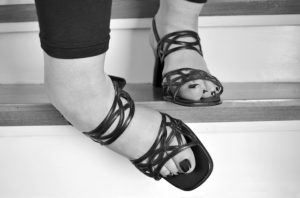
Elements of a premises liability claim
Premises liability law answers the question “If someone gets hurt on your property can they sue?” It does this by explaining when a claim for compensation can be made, and when it cannot. For example, particularly clumsy people who regularly trip and fall can’t sue someone every time they slip or trip. They can, however, sue if a server spills a drink and doesn’t clean it up, and consequently, they slip on the spilled liquid and break their hip.
The spilled drink example includes all the necessary elements of a premises liability claim. Premises liability lawyers must prove the following four elements to have a successful premises liability case.
1. Defendant had possession or control of the property
The restaurant has possession or control of the property where the injury occurred. In the example, the server is acting on behalf of the restaurant, and the injury occurred in the restaurant. The server had the ability to clean up the spill or ask another worker to clean it up.
2. A dangerous condition exists on the property.
The spilled liquid constitutes a dangerous condition on the property. Slipping and falling can cause traumatic brain injury, broken bones, and other serious injuries. The California Civil Jury Instructions 1102 definition of a dangerous condition is below.
“A ‘dangerous condition’ is a condition of public property that creates a substantial risk of injury to members of the general public when the property [or adjacent property] is used with reasonable care and in a reasonably foreseeable manner. A condition that creates only a minor risk of injury is not a dangerous condition. [Whether the property is in a dangerous condition is to be determined without regard to whether [[name of plaintiff]/ [or] [name of third party]] exercised or failed to exercise reasonable care in [his/her] use of the property.]”
3. A victim was harmed.
A person must be harmed. When a restaurant patron slips on a spilled drink, that person suffers harm.
4. The dangerous condition on the property caused the harm
The spilled drink was a dangerous condition on the property which caused the injuries. The restaurant patron slipped because the liquid was on the floor where patrons typically walk. The patron wouldn’t have a broken hip if the server hadn’t spilled the drink or had cleaned up the spill quickly .
If someone gets hurt on your property can they sue?
If an injured person can prove all four elements of a premises liability claim, then yes, that person can sue. Premises liability cases are complicated, however, and the assistance of an experienced premises liability attorney is highly recommended. For 35 years, I have helped victims of property owner’s negligence obtain compensation for injuries. Every case is unique and complex.
Plaintiffs have an easier time winning a premises liability negligence case when the property owner violates a safety rule such as a building code or local ordinance.
Proving Premises Liability: Negligence Per Se
The doctrine of negligence per se presumes an owner is negligent when he disobeys safety laws. Safety laws include building codes and local ordinances.
When suing under negligence per se, the plaintiff needs to show two things to prove negligence. First, the hazardous condition existed in violation of safety laws. Second, the hazardous condition caused the injury or harm. In addition, the safety rules must be intended to protect against the type of danger that caused the plaintiff’s harm. California law says that if a building code violation causes injuries, the owner is presumed to be negligent.
A defendant can overcome the negligence per se presumption by showing a persuasive justification for not following the rules.
Negligence per se might apply when people fall down stairs at apartment buildings or in stores. Building code requirements govern all aspects of stairs including the following:
- the width and height of the handrail
- balusters or posts on open sides
- riser height (vertical part of each step)
- tread (horizontal part of each step)
- run depth
- headroom clearance
- surface covering
If a business owner fails to comply with building code requirements related to the construction and maintenance of stairways, the answer to the following question is yes. “If someone gets hurt on your property can they sue?”
Getting Help from a Long Beach Premises Liability Attorney
Your Injuries Are Personal To Me
I have successfully advocated for premises liability accident victims for 35 years and I can help you. Another person’s negligence should not cost you money. I will fight for you to obtain the full compensation to which you are entitled.
Because your accidents are personal to me, I handle every aspect of your case. My practice focuses exclusively on helping accident victims recover for their injuries.
Call the Law Office of Michael D. Waks today at 888-394-1174. You can also use the convenient online contact form to schedule a free consultation.
- How to Help Your Loved One Cope with a Spinal Cord Injury - October 27, 2021
- How Can I Prove a Motorist Fell Asleep in Traffic? - October 20, 2021
- Filing a Truck Accident Claim? Avoid These Common Mistakes - October 13, 2021